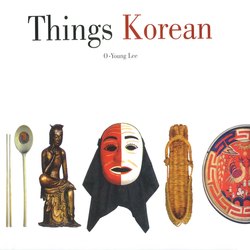Читать книгу Things Korean - O-Young Lee - Страница 13
На сайте Литреса книга снята с продажи.
ОглавлениеThe Egg Crib
Kyerankkuromi
The egg is a very fragile thing. Its shell. which gives way at the chick's first flexing of his muscles, is the most sensitive wall in all of life. It could very well he that this fact prompted the adage. "You don't walk along the castle walls with a load of eggs."
Eggs can not sit still, and even a miracle could not make an egg stand on its end. Phis is where the well-known anecdote about "Columbus' egg" originates. And an egg will go had quickly. It will turn rotten just like that, if you do not sit there and watch it. Something that breaks so easily. that will not stay in one place, and goes had so quickly has got to he packaged properly. It is easy to see how the packaging industry started with the egg.
Koreans used to package their eggs in woven straw. That soft, absorbent straw which protected its eggs from shock and moisture performed the same function the nest does for a bird in providing coziness and security for its eggs.
The fact that Korea's egg crib is made of straw is interesting enough, but there is more. The Japanese, after all, also protect their eggs in straw. But there is a difference. The egg crib in Japan completely encloses the eggs, whereas the Korean egg crib has no top on it.
Why then would our egg crib stop half way up? The Japanese, thinking only of its main function, do it their way to protect the egg. But thinking only in terms of physical function prevents you from seeing the condition of the egg inside, and this ultimately defeats the purpose of the egg crib. When the buyer sees only a bunch of straw, and not what is inside, he will tend to forget how fragile the eggs are. The eggs inside want to warn. "Be careful with us!" but their warning is stifled under that tightly woven lid of straw. So the egg crib becomes a plaything of functional rationalism, that mighty god of modem industrial society who plays his destructive game with the form and structure of everything we build.
The Korean's topless egg crib accomplishes both the physical function of protecting the egg and the equally important function of conveying information. The one carrying the eggs, seeing the fragile things in their container, is constantly reminded of the necessity of careful handling. But even before the eggs are purchased and carried off, this uncovered container allows the customer to see how big or small the eggs are and what condition they are in.
This egg carton is remarkable not only for the information it provides. It is aesthetically pleasing. In its color, in its geometric balance of straight and curving line, in its texture of the organic and the inorganic, this straw crib for eggs evokes that sense of beauty one feels in the ideal blend of contrast and harmony which we can witness in the abstract sculpture.
When a package simultaneously performs the dual function of protecting and displaying its contents, it achieves complete justification for its existence.
What we have in the Korean egg crib is the dream of post-modernism, to free mankind from that over-simplification and minimalization born of the West's scientific "rationalism." Inherent in the open Korean egg crib, which communicates with its bearer, is the authentic spirit of the rational. We might say that the Korean egg crib, with its aesthetic form, its scientific function, and its informative display of its contents, is the prototype of the modem package.
